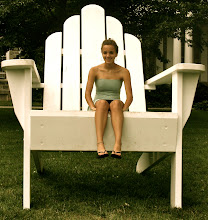I spent my summer on scaffolding painting a mural on the face of a building in Bed Stuy, Brooklyn. The building was the home to the Bowery Residents Committee—an organization that eases the transition from homelessness to housing. The residents, like my group members, were all women. We hoped to create something that would reflect the struggle that the residents had endured and provide them with a sense of belonging. We wanted the mural to be just as much theirs as it was ours.
To ensure that this was truly a community-based effort, we planned a public sharing to include the residents of the underrepresented but transitional neighborhood in our research process and the mural design. The fifteen Voices Her’d “ladies,” as we came to be called, presented our progress and future plans two at a time to an audience of our parents, people who lived in the neighborhood, BRC employees, and the residents themselves. We stood next to a sketch of the proposed mural design as we spoke. Raspberri, a fellow muralist, and I spoke about the research process involved in designing the mural. Other pairs spoke about the colors, symbols gestures and themes. I didn’t know how the BRC residents and employees would receive us. I was afraid they would think we were presumptuous or wouldn’t like the sketch. More than anything, I hoped it wouldn’t seem as though the mural was something we were imposing on them. After the last pair spoke, Muzzy, the director of the entire BRC organization, stood up. While he was commending and thanking us for our work, I realized that he was crying. I undertook this job thinking it would be a nice summer experience, a fun way to make money. I hadn’t realized until then the significance of the mural and what it represented to the women for whom we were painting. For the first time, I was proud to be involved in the project.
The women of the BRC embraced us into their community and allowed us to set up camp in their recreation room. The mural was to be drawn from their views on and experiences with health care and education. The women were eager to involve themselves in our process and shared writing or illustrations that they had done. One woman, Isis, wrote a poem called “These Black Hands,” which was so inspiring that we decided to incorporate a pair of strong black hands as a central symbol in our mural.
The most valuable aspect of my summer job was by far the people that I worked with. The fifteen girls, two lead artists, and the one hundred BRC residents were a geographically, racially and socioeconomically diverse group of women who spent the summer making something together. Although we were all different ages and lived in different neighborhoods, as the summer progressed, my fellow muralists and I found that we had more in common than we had previously thought. Ify and I had long conversations about our experiences in Africa—hers in Nigeria and mine in Tanzania. Casey and I discovered that we had gone to the same elementary school. We did not know each other before this summer and would never have met had it not been for Groundswell, but we were able to bond through our mural.
Instead of communicating our ideas in writing or speech, we painted them on a quiet block in Brooklyn. I considered the effectiveness of this—you can quickly spread your message on the Internet without the hassle of dirt, sweat, and paint. What’s the point of a mural? Now that the summer is over and the mural is finished, I have learned that public art is a unique and valuable form of activism. Our effort consolidated the voices of the BRC residents and the Voices Her’d women. Before this summer, I thought that murals were purely decorative. Now when I see them, I look carefully for their message and I understand the consideration, communication and teamwork that go into creating them. It is doubtful that anyone in the federal government will see our mural, much less be influenced by it, but my hope is that when members of the community view it, they will see that what connects us is far greater than what divides us.

No comments:
Post a Comment